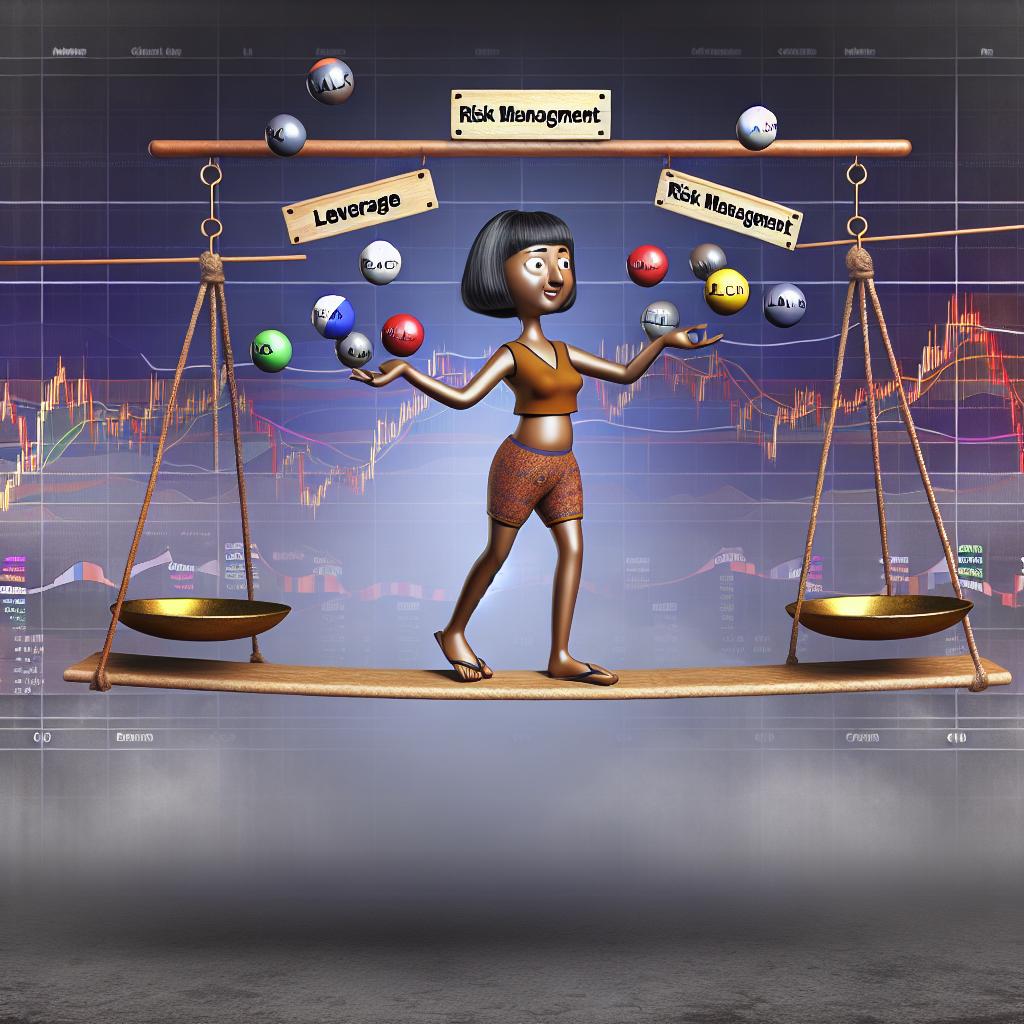
The Role of Leverage in Trading and How to Use It Safely
The Concept of Leverage in Trading
Leverage is a fundamental concept in trading that involves borrowing capital to increase the potential return on investment. Understanding leverage is crucial for traders as it can significantly amplify both gains and losses. Essentially, leverage allows traders to open larger positions than their actual account balance would permit.
In trading, leverage is often expressed as a ratio, such as 10:1 or 100:1. This indicates how much more than their investment a trader can trade. For instance, with a leverage of 100:1, a trader with $1,000 can control a position worth $100,000. Leverage is commonly used in the forex market, but it is also available in other markets like commodities, equities, and cryptocurrencies.
How Leverage Works
Leverage works by using borrowed funds from a broker to amplify the size of a trading position. This means that traders only need to deposit a fraction of the full value of the trade. This fraction is known as the margin, which acts as a security deposit to cover potential losses.
For example, if a trader uses 50:1 leverage and wants to trade $50,000 worth of currency, they would only need to provide $1,000 as margin. The remaining $49,000 would be funded by the broker.
Benefits of Leverage
One of the primary advantages of leverage is the ability to control large positions with a relatively small amount of capital. This can result in substantial profits if the market moves in the trader’s favor. Additionally, leverage allows for greater flexibility and the potential to diversify across different assets or markets.
Traders can engage in multiple trades simultaneously, potentially capitalizing on various market conditions. This ability to conduct a diversified trading strategy is one of the key attractions of using leverage. By not tying up a significant part of their own capital in a single position, traders can explore different opportunities and strategies.
Furthermore, for experienced traders who have a good grasp of market trends, leverage can be an efficient way to maximize returns. Through careful analysis and market predictions, traders can enter and exit positions at optimal times, enhancing the possibility of profit.
Risks Associated with Leverage
While leverage can enhance returns, it also increases the risk of significant losses. Because leverage magnifies both gains and losses, a small adverse price movement can result in substantial financial loss. Thus, it is essential for traders to use leverage judiciously and implement risk management strategies.
One of the primary risks is related to volatility. Markets can be unpredictable, and a rapid change in price can lead to significant losses. Traders using high leverage might find themselves in a situation where their margin is insufficient to cover the position, potentially resulting in a margin call from the broker. This requires traders to provide additional funds or reduce their position,s to maintain their trade.
Additionally, emotional risks cannot be overlooked. With high leverage, the stakes are higher, and traders may find themselves experiencing stress and emotional volatility, which can impair decision-making. It is important for traders to maintain discipline and avoid making impulsive decisions driven by fear or greed.
Using Leverage Safely
To use leverage safely, traders should first have a well-thought-out trading plan and a clear understanding of the markets they are trading. It is also crucial to:
– Determine an appropriate level of leverage: Based on risk tolerance and market conditions, traders should carefully assess how much leverage to use. Beginners are often advised to start with lower leverage until they gain sufficient experience.
– Utilize stop-loss orders: These are predefined price levels at which a trader will exit a position to prevent further losses. By setting stop-loss orders, traders can limit their risk exposure and protect their capital from significant downturns.
– Regularly monitor and adjust positions: Market conditions can change rapidly, and traders need to be vigilant in monitoring their trades. By staying informed and making timely adjustments, traders can respond to market movements effectively.
Additionally, staying informed about relevant risk management techniques and continually educating oneself about market trends and developments is critical. This includes understanding the mechanics of leverage, recognizing potential risks, and learning how to mitigate them through various strategies.
To further enhance safety, traders might also consider employing hedging strategies. Hedging involves taking positions in different markets or financial instruments to offset potential losses in others. This can create a more balanced risk profile and offer some protection against adverse market movements.
Traders should continuously evaluate and adjust their strategies based on their performance and changing market conditions. Flexibility and adaptability are crucial traits for successful leveraged trading. Learning from past trades, understanding both successes and failures, and adjusting strategies accordingly can contribute to long-term success.
Another important aspect of using leverage safely is to ensure that one’s financial situation is stable. Traders should only trade with capital they can afford to lose, as trading invariably involves risks. Adequate capital reserves provide traders with the cushion needed to absorb potential losses without jeopardizing their overall financial well-being.
By implementing these strategies, traders can maximize the benefits of leverage while minimizing associated risks. Effective use of leverage requires a combination of technical knowledge, strategic foresight, and emotional discipline. When used appropriately, leverage can be a powerful tool in a trader’s arsenal, opening up opportunities that would otherwise be inaccessible. However, it requires a responsible and informed approach to ensure its potential is fully realized without unduly exposing oneself to risk.
This article was last updated on: August 3, 2025